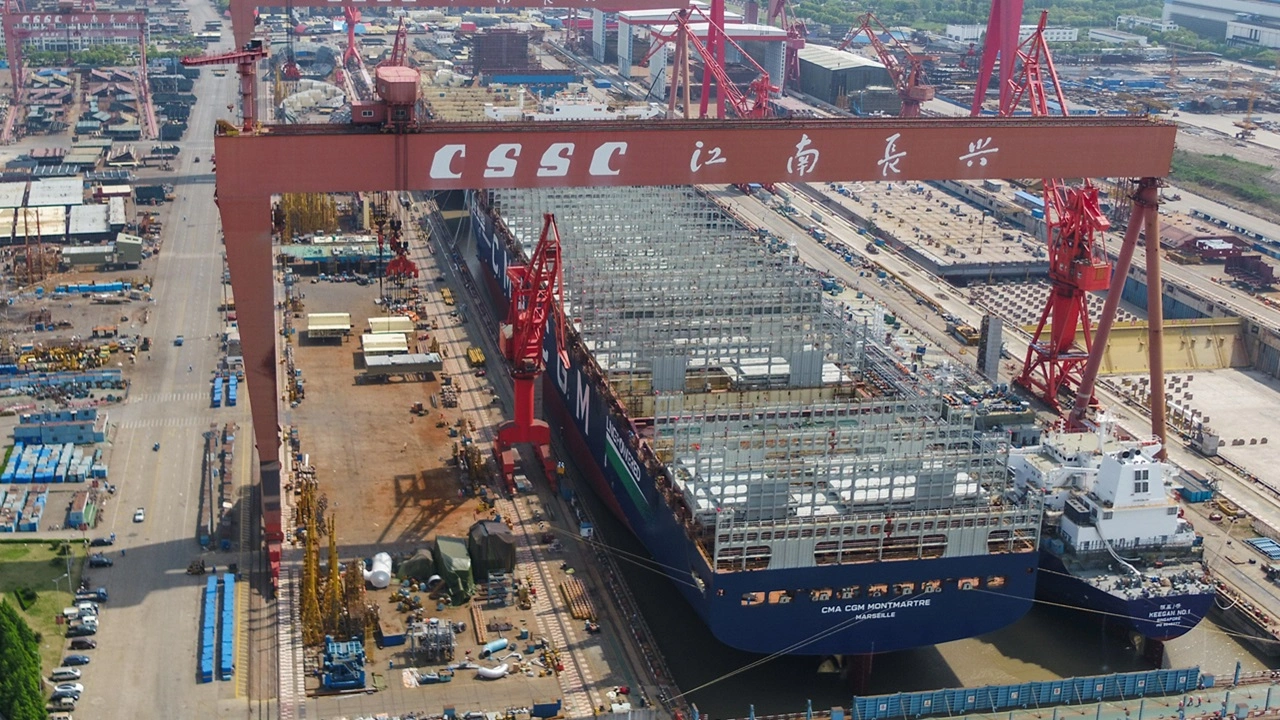With the U.S. Trade Representative’s (USTR) launching a “301 investigation” into China’s shipbuilding industry, China’s dominance of the global new shipbuilding market is under intense scrutiny. The industry believes that China’s dominance of the global shipbuilding industry has six major factors!
Speaking on the ‘Shipbuilding – a macro view’ panel at Sea Asia 2025 Adam Kent, Managing Director of Maritime Strategies International (MSI) noted that last year Chinese yards captured around 75% of all new orders and in sectors such as dry bulk and container shipping the share of contracts was around 80%. “In 2000 China was responsible for less than 10% of shipyard output and over the course of the last 25 years has gone from a minor player to being a very, very dominant player,” he said.

Answering the question as to how China had achieved such rapid domination of the global shipbuilding market Kent attributed it to a number of factors.
One factor was the support from the authorities. “Shipbuilding has been identified as a strategic industry by both regional and local governments in China, and there has been a lot of support for shipbuilding throughout that period, even during the market trough in 2012-2016,” he explained.
A second factor was lower pricing to attract owners to order at Chinese yards. Kent explained that the country’s yards had been able to attract orders that would have traditionally gone to Japanese or Korean yards by offering prices that could in the range of double digits lower, however, this lower cost did sometimes come at the expense of quality.
“But what I would say is from speaking the yards, speaking to owners, and speaking to investors, is that the quality gap has closed a lot over the course of the last 15 years or so. So that is a huge positive now that you can still get a vessel slightly cheaper in China, but the quality in many instances is as good as you’d get elsewhere.”
A third factor is flexibility in terms of design and equipment. Korean yards specialised in building series designs off the shelf. “Whereas if you go to a Chinese yard, you can talk to them about what sort of vessel you want, what design, what equipment onboard the ship you would like to see and they will accommodate that,” Kent said.
However, an equipment manufacturer Seatrade Maritime News spoke to at the exhibition said that with the recent boom in orders at Chinese shipbuilders the yards had become less flexible than they were in the past. However, Chinese yards were still more flexible in terms of specific equipment requirements from owners than the Korean yards. He noted that the Japanese yards were the least flexible.
A fourth factor according to Kent is Chinese yards having started from building dry bulk vessels they now offer the full range of ship types including some offshore assets.
A fifth factor is productivity at Chinese shipbuilders. The downturn in the country’s construction sector has seen workers involved previously in welding work for heavy industry and infrastructure moving across to work in shipyards. “We’ve seen in shipyards in China that productivity has gone through the roof. I speak to owners’ and they tell me that the Chinese yards are trying to give them their vessels six months before the original scheduled delivery date,” Kent said.
On top of the boost in productivity is the reactivation of yards mothballed in the 2013 – 2019 period and new capacity being developed.
A sixth factor is finance. “I think you should also not underestimate the support the Chinese yards get from financial institutions in China,” Kent told the conference.
Up to 2009 newbuilding finance was dominated by European banks. Today the ship finance landscape is dominated by Asian banks, and Chinese banks and leasing houses supported shipbuilding even in the lean times and that is a partnership that China has benefitted from.
“The Chinese yards have sort of wrapped up shipbuilding basically and it’s getting more and more difficult for the other big powerhouses – the shipyards in Japan and Korea to compete,” Kent stated.


